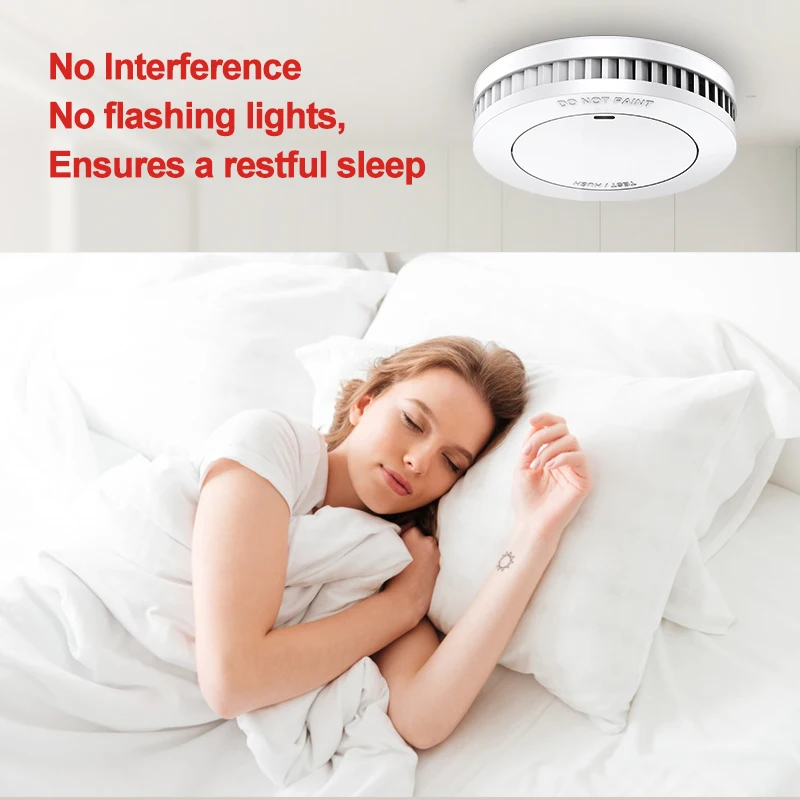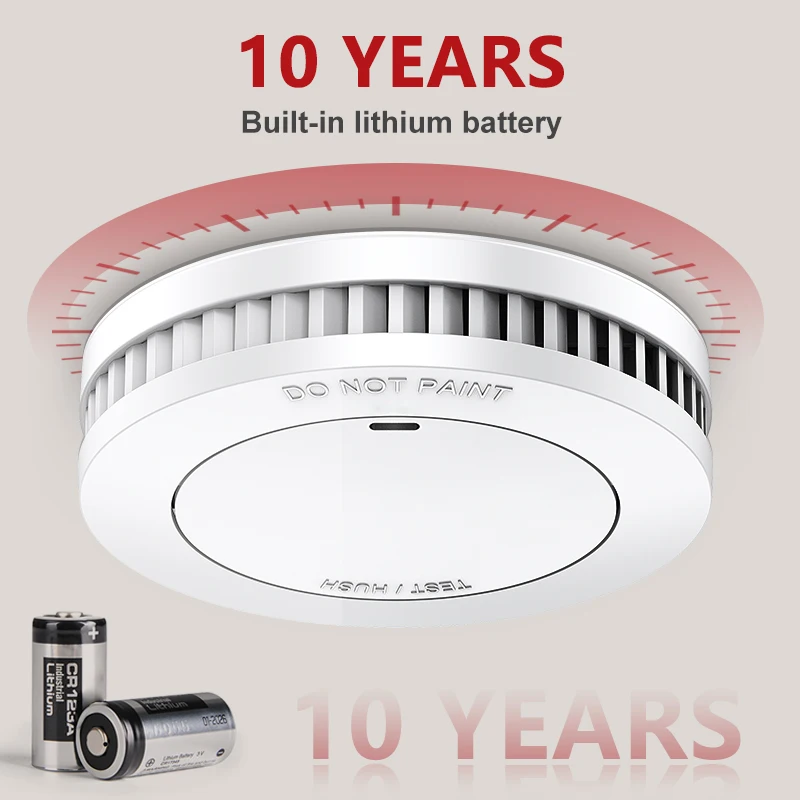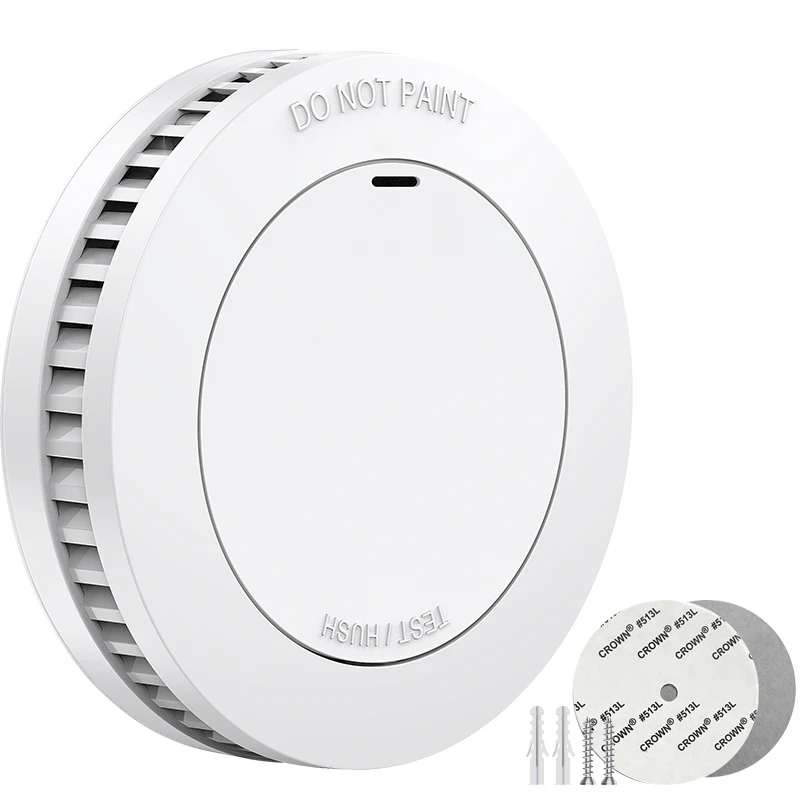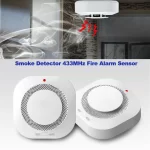Identifying Common Causes of Smoke Alarm Chirping
First Alert smoke alarm are designed to provide crucial alerts. However, sometimes they chirp for reasons other than fire. Identifying the common causes of these chirps is essential.
Battery Issues
The most common reason for a smoke alarm chirping is a low battery. First Alert smoke alarms recommend checking the battery regularly and changing it as needed. If the alarm continues to chirp after a fresh battery replacement, the issue might not be the battery.
Residual Charge Patterns
Chirping might continue due to residual charge left in the smoke alarm. This happens when old batteries leave a lingering charge. Resetting the smoke alarm can often resolve this. Remove the alarm from its mounting, disconnect the battery and hold down the test button for about 30 seconds to drain any remaining charge.
Incorrect Installation Location
Another reason your smoke alarm might chirp could be its installation location. High humidity areas, like bathrooms or near cooking appliances, can cause false alarms or chirping. Review the manufacturer’s guidance on where to install your smoke alarm to avoid these issues.
Dust and Debris
Accumulation of dust or debris in the alarm can trigger chirping. Inspect and clean your smoke alarms regularly to prevent this problem. Make sure to use a gentle brush or a blast of air to avoid damaging the sensors.
Age of the Smoke Alarm
All smoke alarms have a lifespan. First Alert alarms typically last between 5 and 10 years. Check the manufacturer’s date on your alarm. If it’s older than recommended, it could be time to replace the unit. Older units are more susceptible to malfunction, including chirping.
Understanding and addressing these common issues can help keep your smoke alarm functioning correctly and ensure your safety.

Battery Issues and Replacement Procedures
Replacing a smoke alarm’s battery is a common fix for stopping nuisance chirping. Start by checking the First Alert smoke alarm for any low battery alerts or signs. If you find any, replace the battery according to these steps:
- Locate the battery compartment on your smoke alarm.
- Open the compartment and carefully remove the old battery.
- Before inserting a new battery, clean the compartment with a dry cloth.
- Insert a fresh battery, ensuring proper orientation.
- Close the battery compartment securely.
- Press the test button on the smoke alarm to check if it’s working.
If your smoke alarm still chirps after a battery change, double-check that the battery is fresh and properly installed. Make sure the type of battery matches what the manufacturer recommends.
Apart from regular battery changes, pay attention to your smoke alarm’s end-of-life warning. This often signals that the entire alarm unit requires replacement, not just the battery. Follow the manufacturer’s guidance on replacing the smoke alarm every 5 to 10 years, or earlier if you frequently experience false alarms or chirping. To keep your First Alert smoke alarm in good working condition, schedule regular checks and battery replacements as part of your home maintenance routine.
Residual Charge Impact: Resetting Your Smoke Alarm
Residual charge in a smoke alarm can cause chirping even after battery replacement. This is when leftover energy from the old battery remains in the device. To fix this, a reset may be needed. Here’s how to reset your First Alert smoke alarm to clear any residual charge:
- Take the alarm off of its mounting bracket.
- Open the battery compartment and remove the battery.
- Press and hold the test button on the alarm for at least 30 seconds.
- Release the button, then put the new battery back in the device.
- Place the smoke alarm back on its mounting bracket.
- Test the smoke alarm by pressing the test button.
A full reset clears out any leftover charge and should stop the chirping. It helps the alarm work right. Use this step if new batteries don’t stop the beeping. Remember to check the user manual for any specific details for your First Alert model. Regular resets can keep your smoke alarm working well. It can prevent false alarms and ensure your safety at home.
Proper Detector Location to Prevent Nuisance Alarms
Choosing the right location for your First Alert smoke alarm is crucial to prevent nuisance alarms. Here are several key locations and factors to consider when installing your smoke alarm:
- Avoid High Humidity Areas: Locations like bathrooms or laundry rooms are prone to high humidity. This can cause false alarms as some smoke detectors may interpret steam as smoke.
- Stay Away from HVAC Vents: Installing smoke alarms near HVAC vents can lead to false alarms. Vents can direct dust and other particles toward the alarm, interfering with its operation.
- Keep Clear of Dusty Places: Areas that accumulate dust can affect your smoke alarm’s sensors. Regular cleaning is necessary, but it’s best to avoid overly dusty spaces from the start.
- Avoid Direct Sunlight: Direct exposure to sunlight can affect the sensors in photoelectric alarms. This can lead to false alarms, so it’s best to install the unit away from direct sunlight.
- Consider Ceiling Placement: Smoke rises, so the center of the ceiling is often an ideal location for a smoke alarm. However, make sure it’s at least 12 inches away from any wall.
- Wall Installations: If installing on a wall, place the alarm at least 3 feet away from cooking appliances to prevent false alarms caused by normal cooking smoke or steam.
By considering these locations and factors, you can optimize the placement of your First Alert smoke alarm. This helps reduce the chances of nuisance alarms and ensures the alarm functions properly when you need it the most.

Maintenance Tips: Dust and Debris Prevention
Keeping your First Alert smoke alarm free from dust and debris is vital for ensuring its reliability. Dust accumulation can interfere with sensor functionality, leading to false alarms. Here are several maintenance tips to prevent dust build-up in your smoke alarm:
- Regular Cleaning: Use a soft brush to gently clean the exterior of your smoke alarm monthly. This helps keep the sensors clear.
- Use Compressed Air: Blowing compressed air into the smoke alarm can effectively remove dust from hard-to-reach parts.
- Vacuum Around Installation Areas: Regularly vacuum around the smoke alarm’s installation area to minimize airborne dust.
- Avoid Sprays and Vapors: When cleaning your home, keep sprays, aerosols, and strong vapors away from the smoke alarm. These can cause buildup inside the detector.
- Inspect Regularly: Check your smoke alarm periodically to make sure there is no visible dust or debris accumulating on or inside the unit.
By implementing these simple maintenance steps, you can significantly lower the chances of your First Alert smoke alarm experiencing disruptions due to dust and debris. Regular maintenance not only enhances the alarm’s functionality but also extends its operational life.
Environmental Factors Affecting Smoke Alarm Sensitivity
Smoke alarms are sensitive to various environmental factors. Understanding these can help prevent false alarms. Here are key environmental influencers and how they affect your First Alert smoke alarm.
- Temperature Fluctuations: Extreme temperatures can cause smoke alarms to malfunction. Very cold or hot conditions might lead to false alarms. Keep alarms away from draughty or overly warm areas.
- High Humidity: Moisture in the air can be mistaken for smoke. Avoid installing smoke alarms in damp areas like bathrooms.
- Airborne Particles: In areas where there is a lot of dust or cooking smoke, alarms may react. Place smoke detectors away from kitchens and dusty places.
- Chemical Vapors: Harsh chemicals can trigger alarms. Keep them away from areas where you use heavy cleaning agents or paint.
- Electromagnetic Interference: Certain home appliances can interfere with smoke alarm sensors. Install smoke alarms at a safe distance from electronic devices.
By recognizing how environmental factors impact smoke alarm sensitivity, you can better position and maintain your alarms. This reduces false alarms and ensures better protection.

Upgrading Your Smoke Alarm: Benefits of Newer Models
Upgrading to newer First Alert smoke alarm models offers several benefits. First, advanced technology in newer models enhances sensitivity to smoke while reducing false alarms. This technology distinguishes between non-threatening sources like steam from cooking and actual smoke from a fire.
Additionally, updated models often come with features like wireless interconnectivity. This allows your alarms to communicate with each other, proving beneficial in larger homes where a fire might occur away from your primary detector. If one alarm detects smoke, all connected alarms will sound, ensuring you are alerted no matter your location within the home.
Battery life has also improved in newer models. For instance, some now feature a 10-year battery life, which eliminates the need for frequent replacements and increases reliability. Moreover, modern units often include easier testing and maintenance features like front-loaded battery compartments that make battery changes straightforward and quick.
Lastly, many newer smoke alarms are designed with sleek, compact designs that blend more seamlessly into your home’s decor. This ensures safety without sacrificing aesthetics.
By upgrading, you ensure that your home is protected with the latest in smoke detection technology, improving overall safety and peace of mind.
Strategies for Dealing with False Alarms: A Step by Step Guide
Dealing with false alarms from your First Alert smoke alarm is easier with a clear plan. Follow this simple step by step guide to stop false alarms:
- Check the Alarm: Make sure it’s installed right. Put it in the best spot, away from kitchens, windows, and vents.
- Test the Battery: Replace old batteries. Use the right type recommended by First Alert for your model.
- Clean the Alarm: Dust that gets inside can cause chirps. Use compressed air or a soft brush to clean it.
- Reset the Alarm: If it keeps chirping, try a reset. Remove the battery and hold the test button for 30 seconds.
- Reduce Humidity: Keep alarms out of damp rooms. Use dehumidifiers to cut down moisture in the air.
- Move the Alarm: If false alarms happen near the kitchen or bathroom, move the alarm farther away.
- Upgrade When Needed: Old alarms may chirp more. Get a new one if yours is past the 5 to 10-year mark.
- Contact Support: Still having trouble? Reach out to First Alert’s customer support for help.
Following these steps will help you handle false alarms. Keep your smoke alarm working right and stay safe at home.


